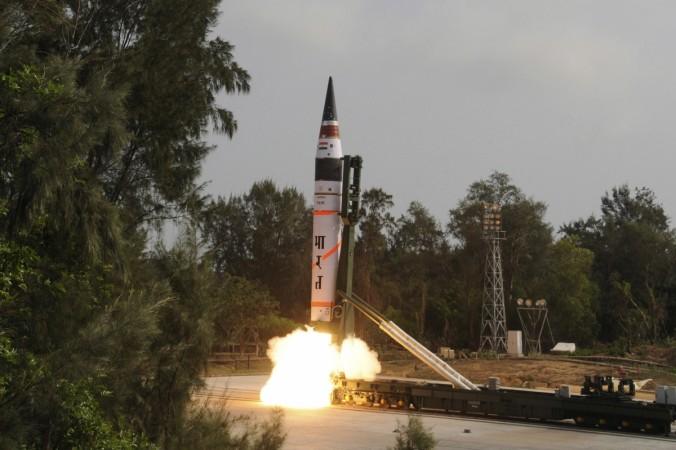
India succeeded in test-firing a nuclear-capable Agni-I missile from Abdul Kalam Island, earlier known as Wheeler Island, off the coast of Odisha Monday. The indigenously built missile is capable of hitting a target at a range of 700 kms.
The medium-range surface-to-surface ballistic missile was test-fired at around 9:15 a.m. from the Integrated Test Range as part of Strategic Forces Command of Indian Army's training exercise. The missile hit the target in 9 minutes and 36 seconds, the Press Trust of India reported.
"It was test-fired as part of Strategic Forces Command (SFC) training exercise and the trial was successful," IANS quoted Defence Research and Development Organisation (DRDO) official as saying.
The Agni-I missile's sophisticated navigation system ensures it hits the target with a high degree of accuracy and precision, according to reports. The missile weighs 12 tonnes and can carry a conventional payload of 1,000 kg or a nuclear warhead.
India test-fires nuclear-capable Agni-I - https://t.co/42lTA2nIC2 (File photo) pic.twitter.com/y8irCwJdzD
— The Hindu (@the_hindu) March 14, 2016
The missile developed jointly by DRDO's Premier Missile Development Laboratory — Advanced Systems Laboratory, Defence Research Development Laboratory and Research Centre Imarat. It has been integrated by Bharat Dynamics Limited in Hyderabad.
DRDO had successfully test-fired Agni-I missile in November 2015 and a month later it test-fired long-range nuclear-capable surface-to-surface Agni-IV missile.
There are three Agni missiles variants — medium-range ballistic missile (Agni-I), intermediate-range ballistic missile (Agni-II, Agni-III, Agni-IV) and inter-continental ballistic missile (Agni-V, Agni VI).
While Agni-II and Agni-III are operational, Agni-V is in the last phase of testing and Agni-VI is in the early stages of development. Agni-V, capable of striking targets 8,000 km away, can be launched from anywhere and Agni-VI, which has a strike-range of 10,000 km, can be deployed on submarines as well as land-based launchers.

















